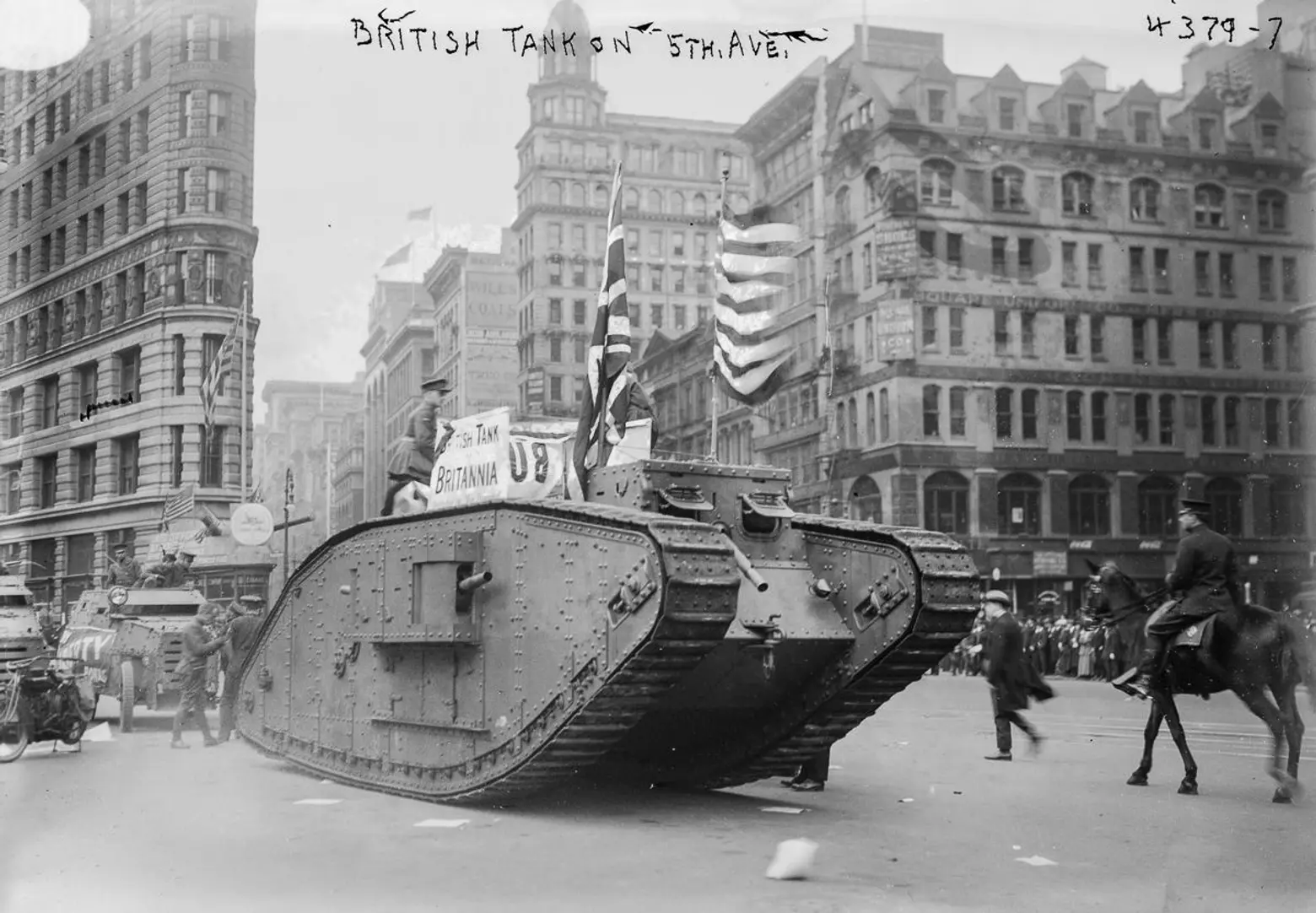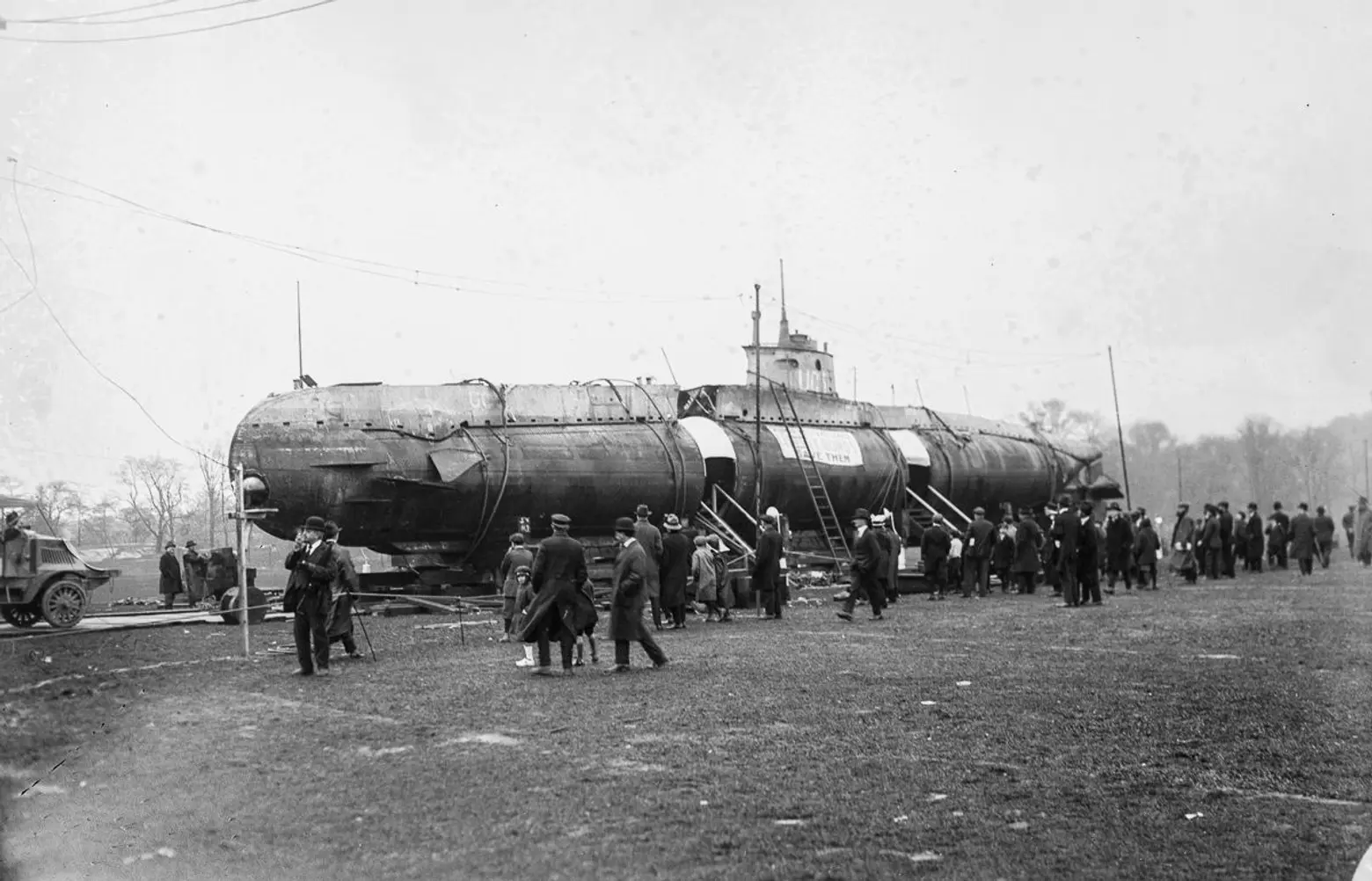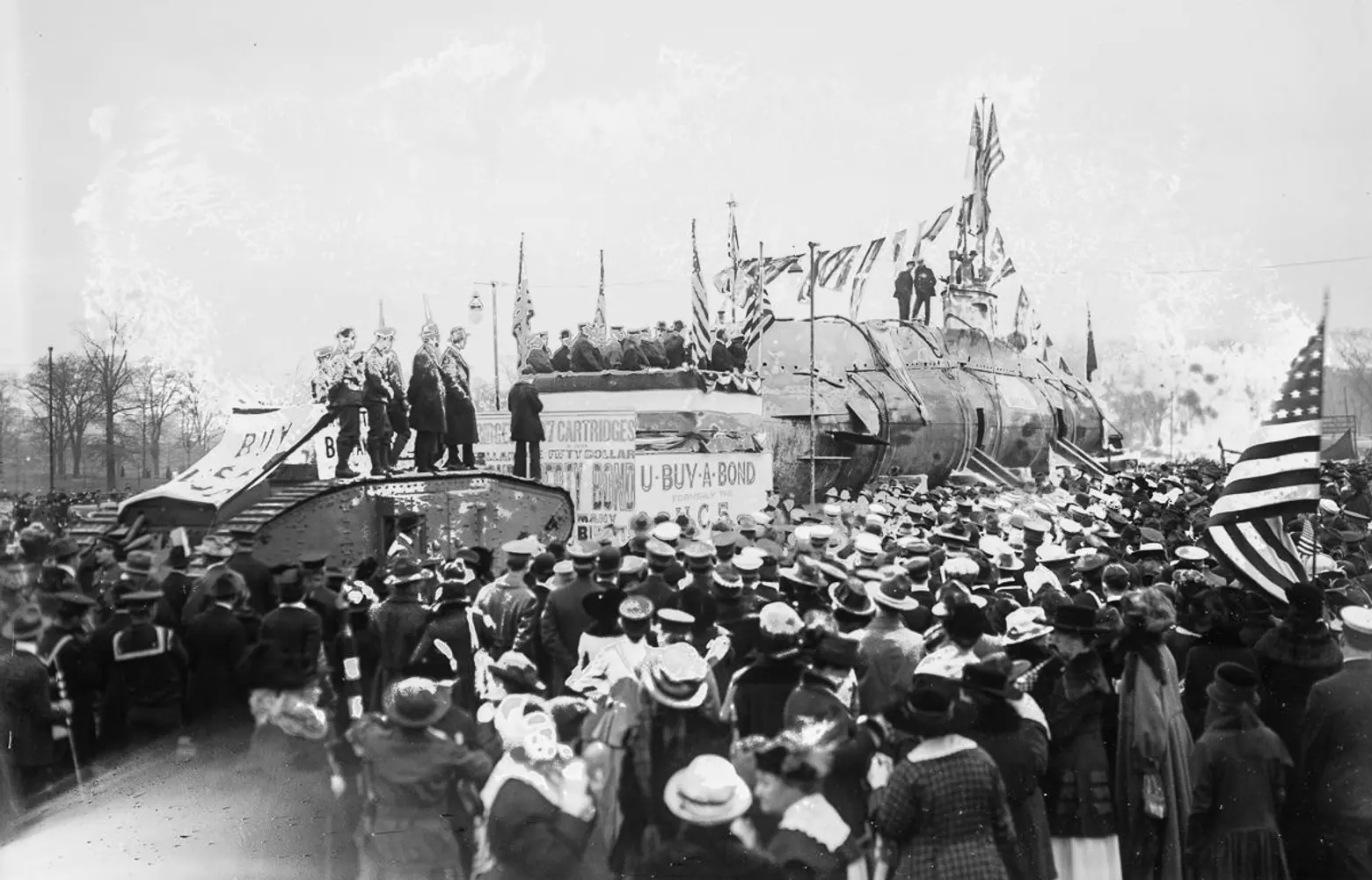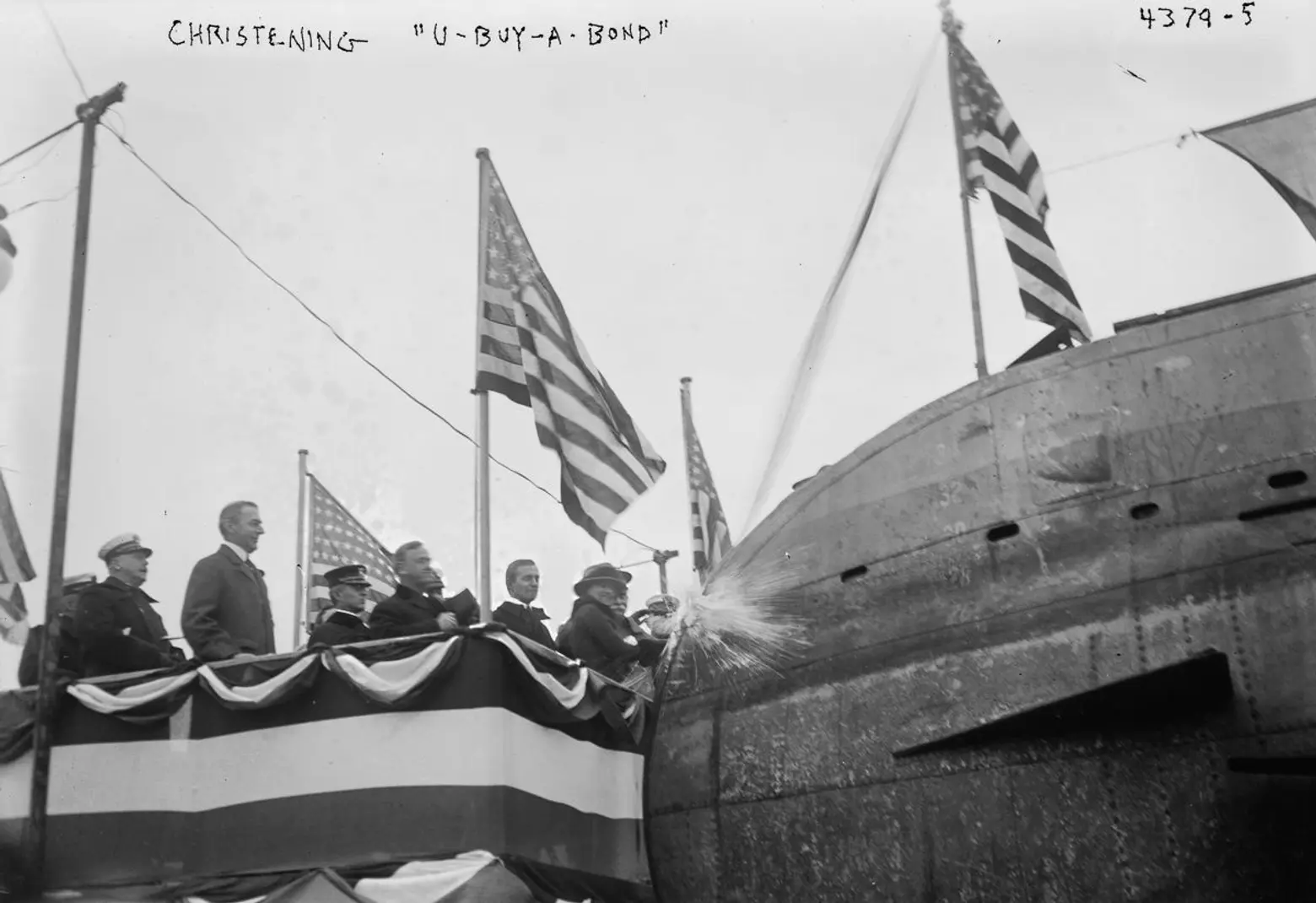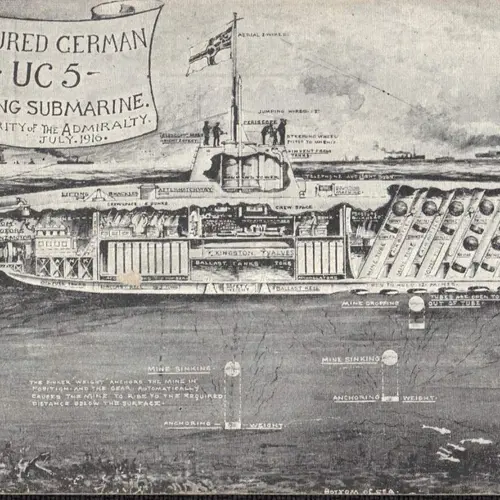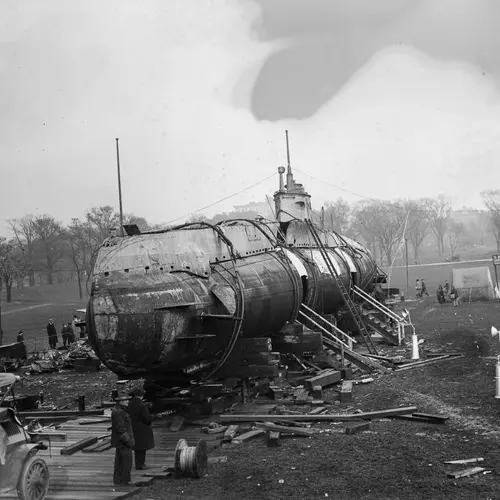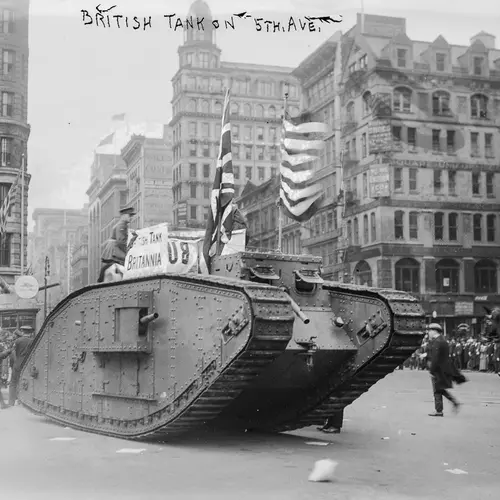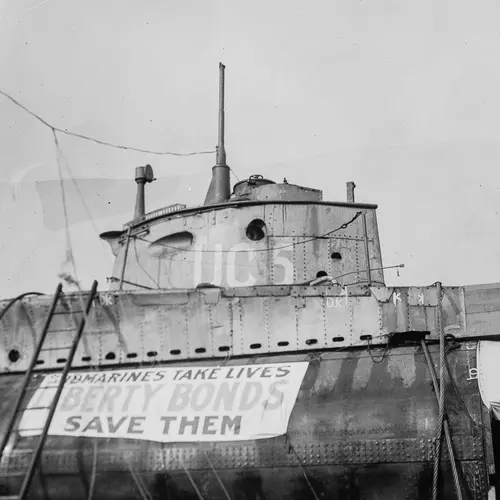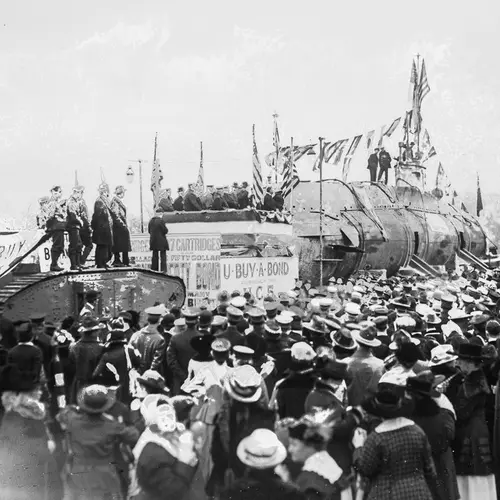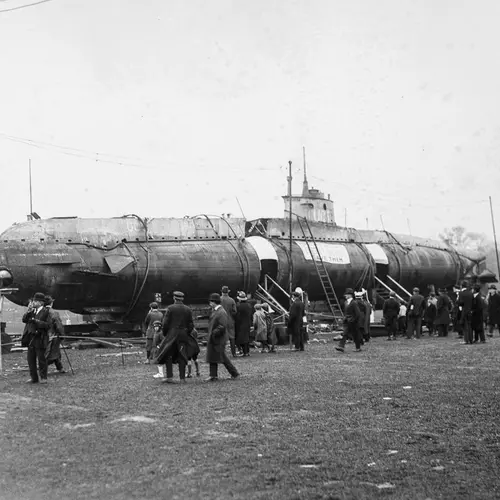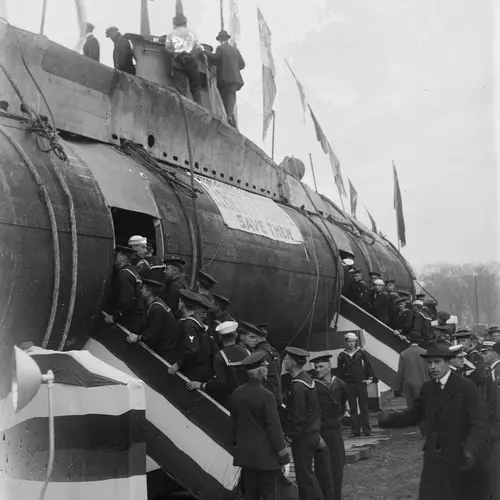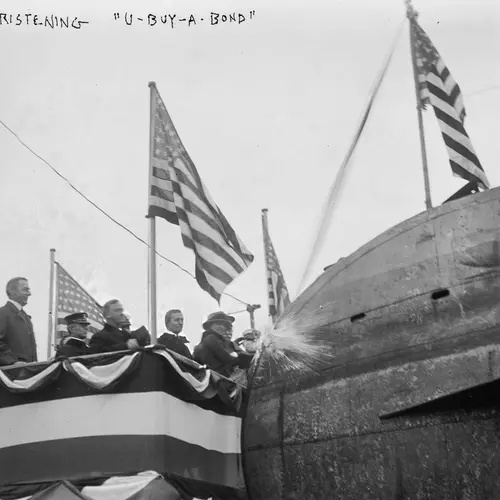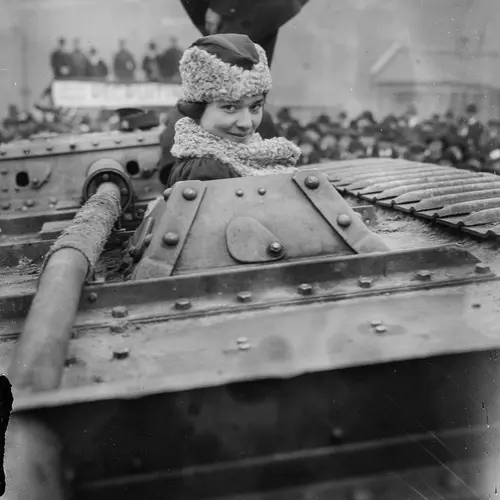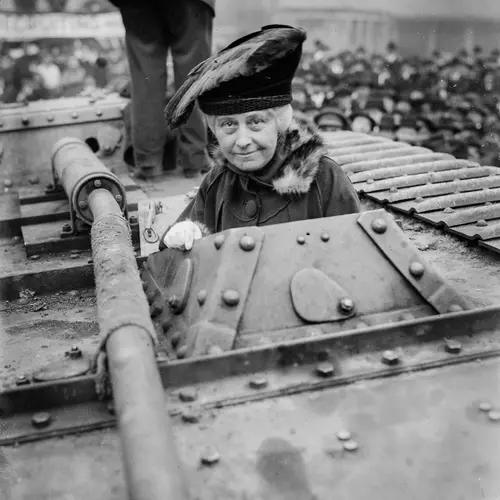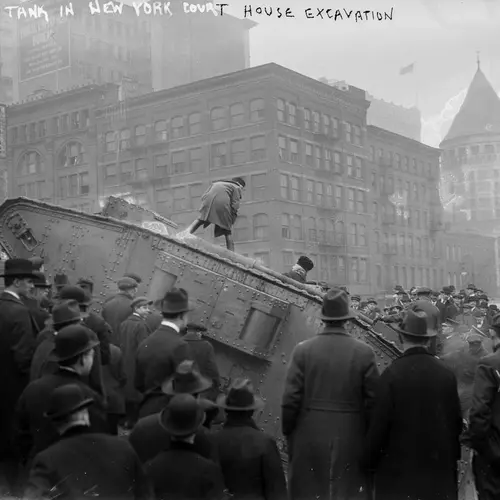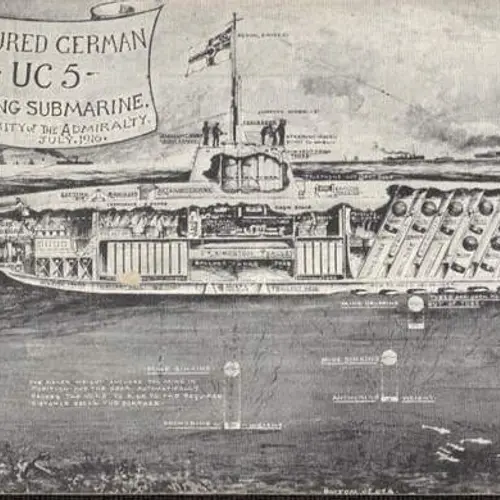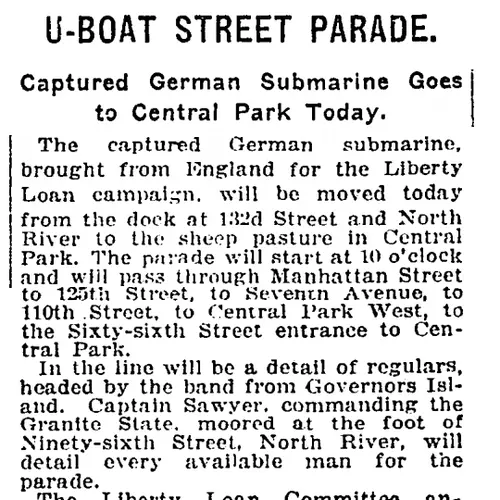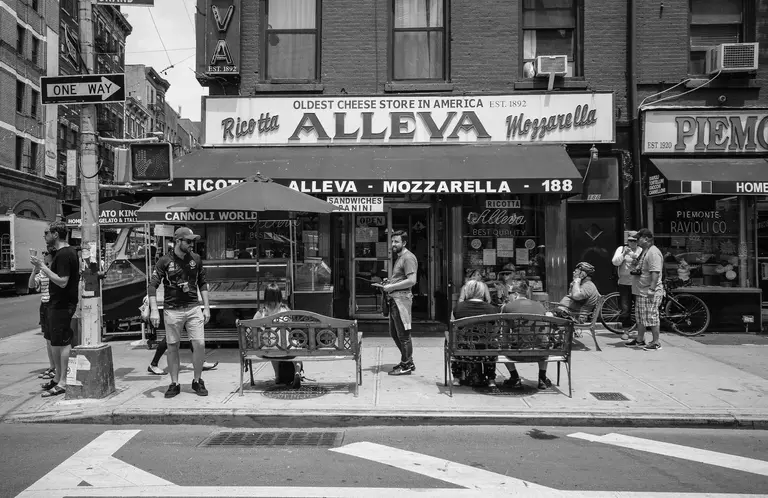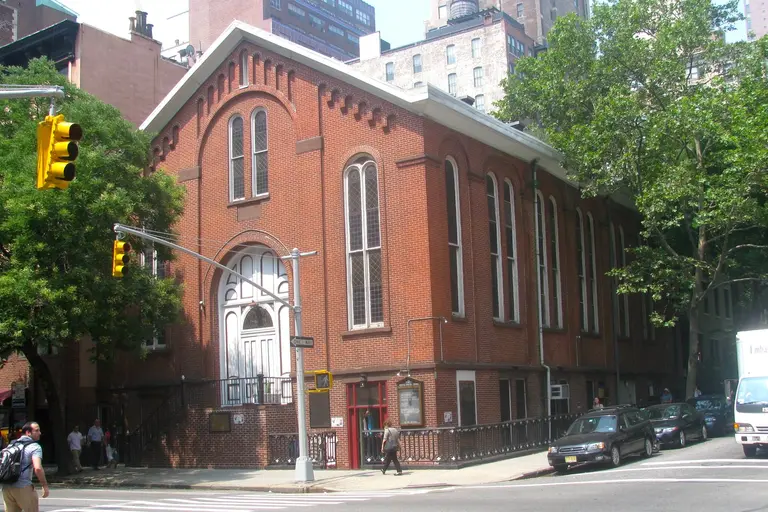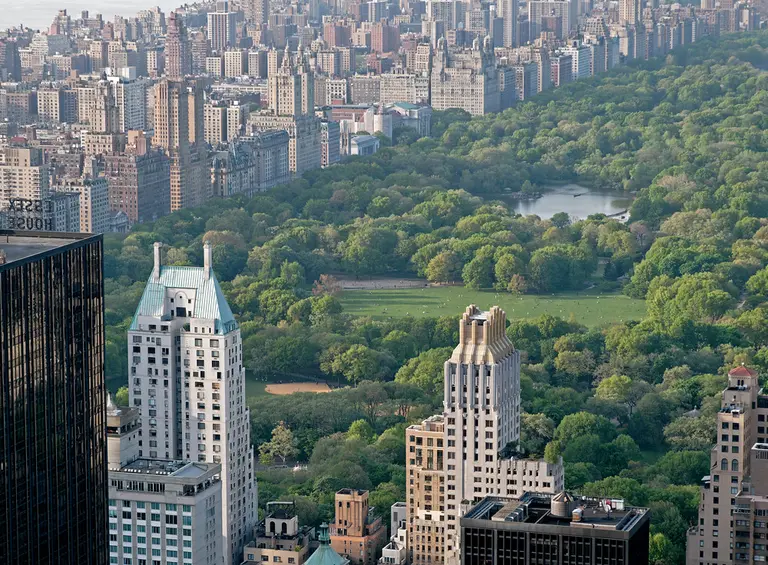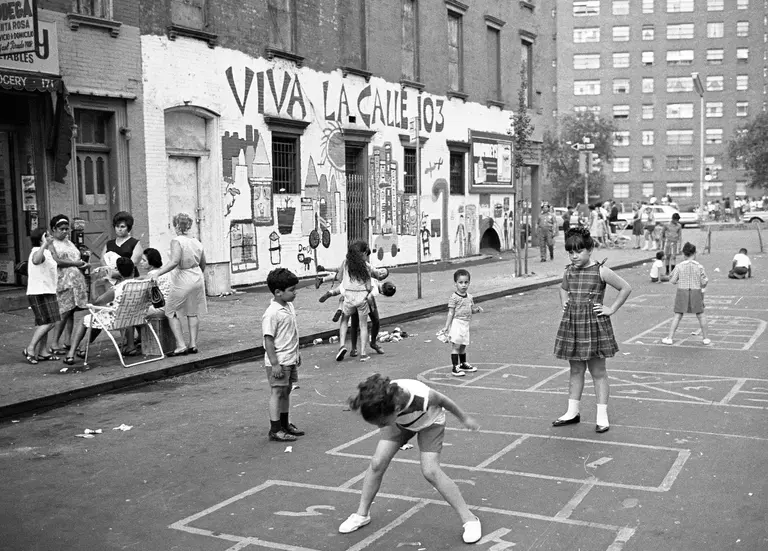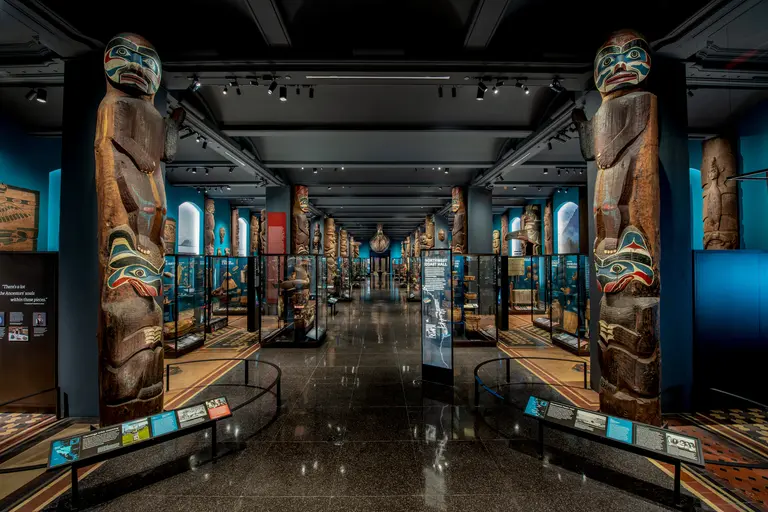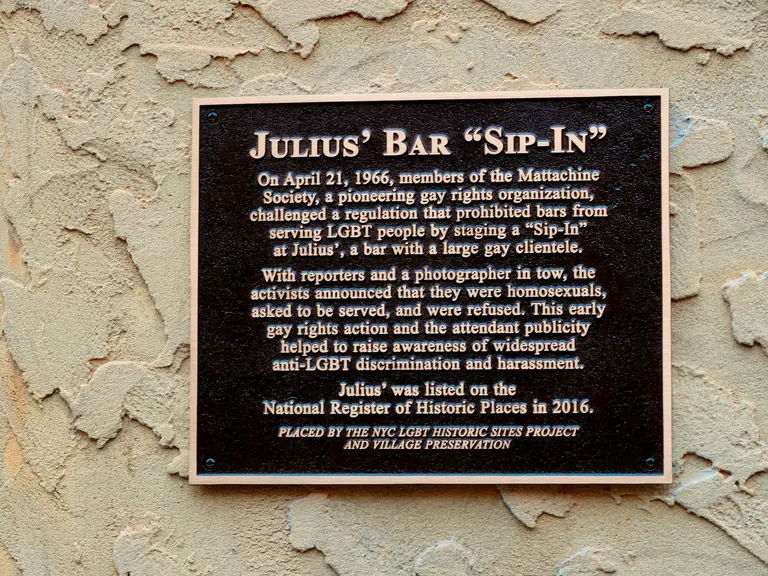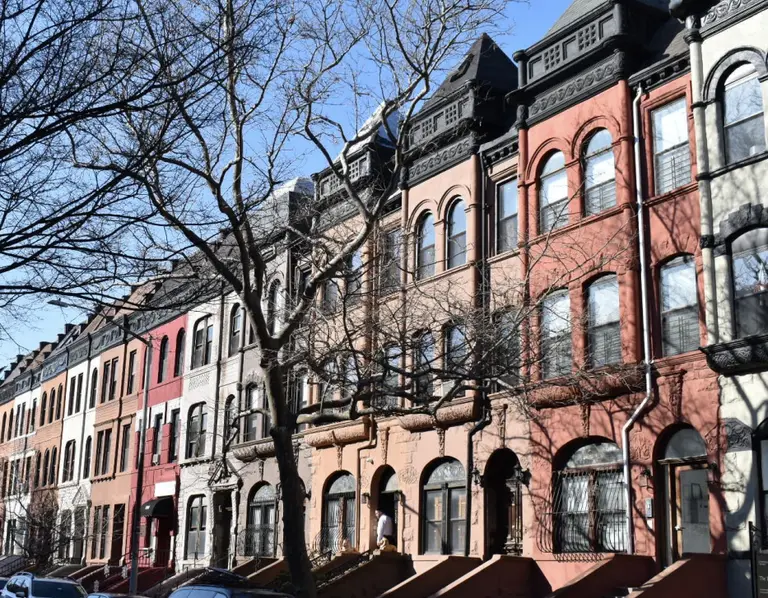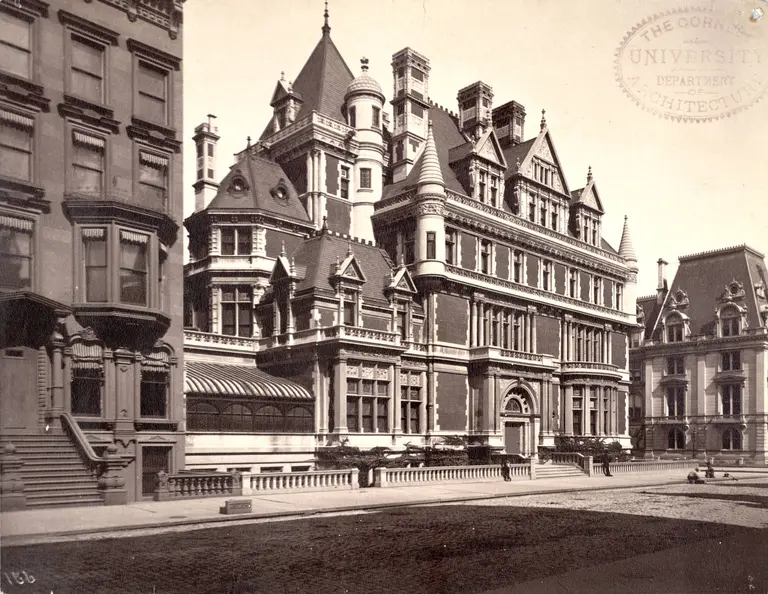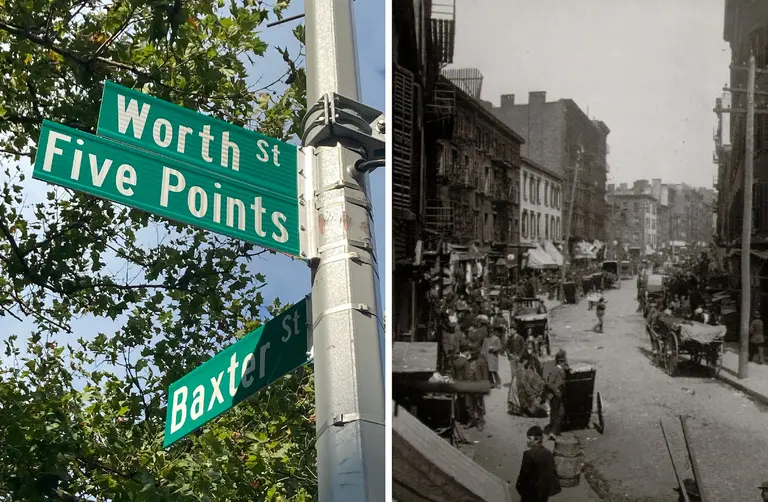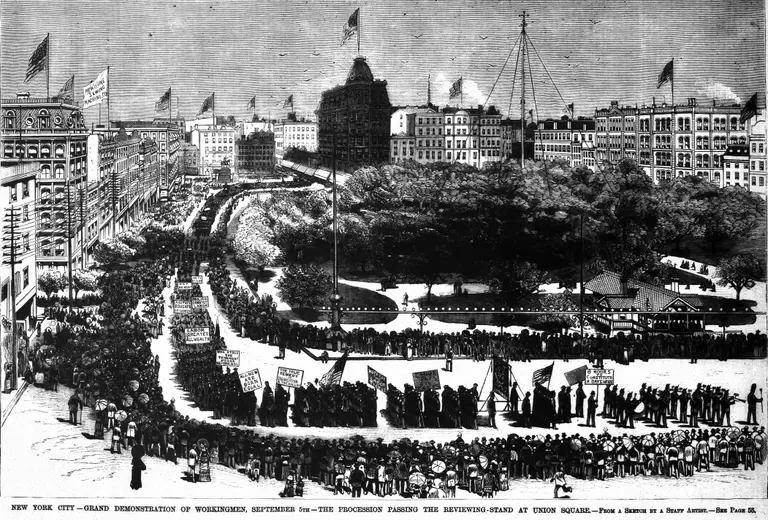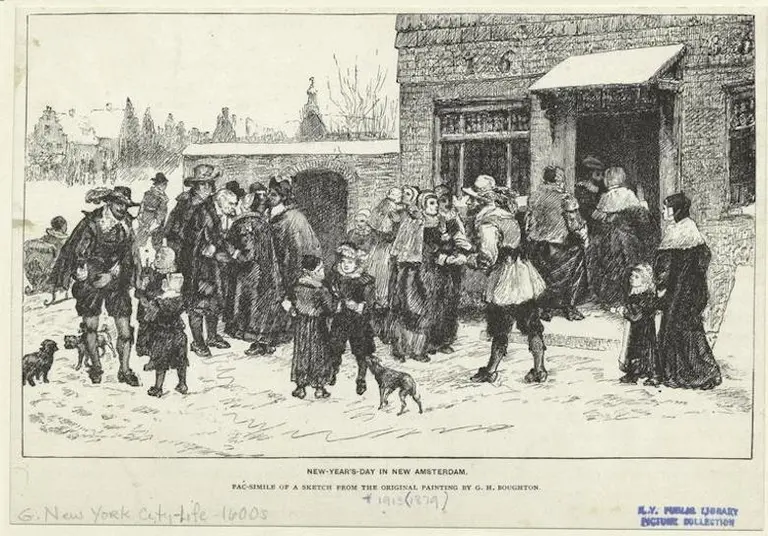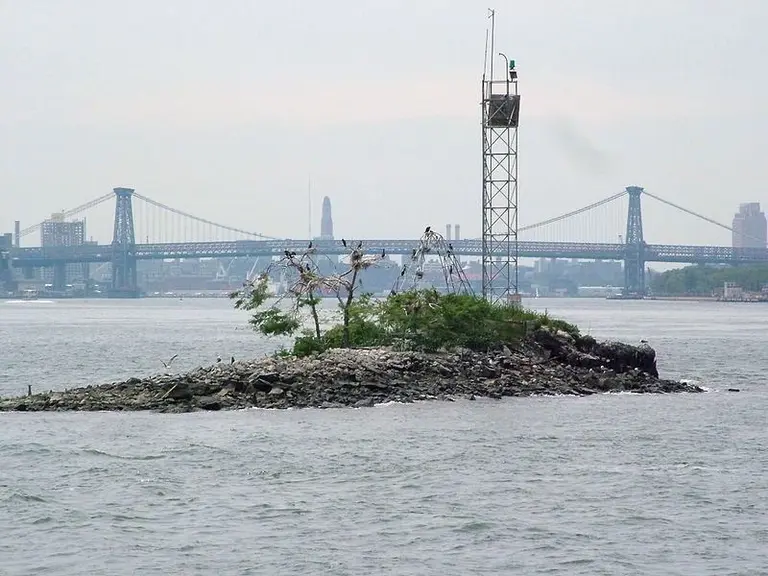In 1917, a German U-Boat submarine ended up in Central Park
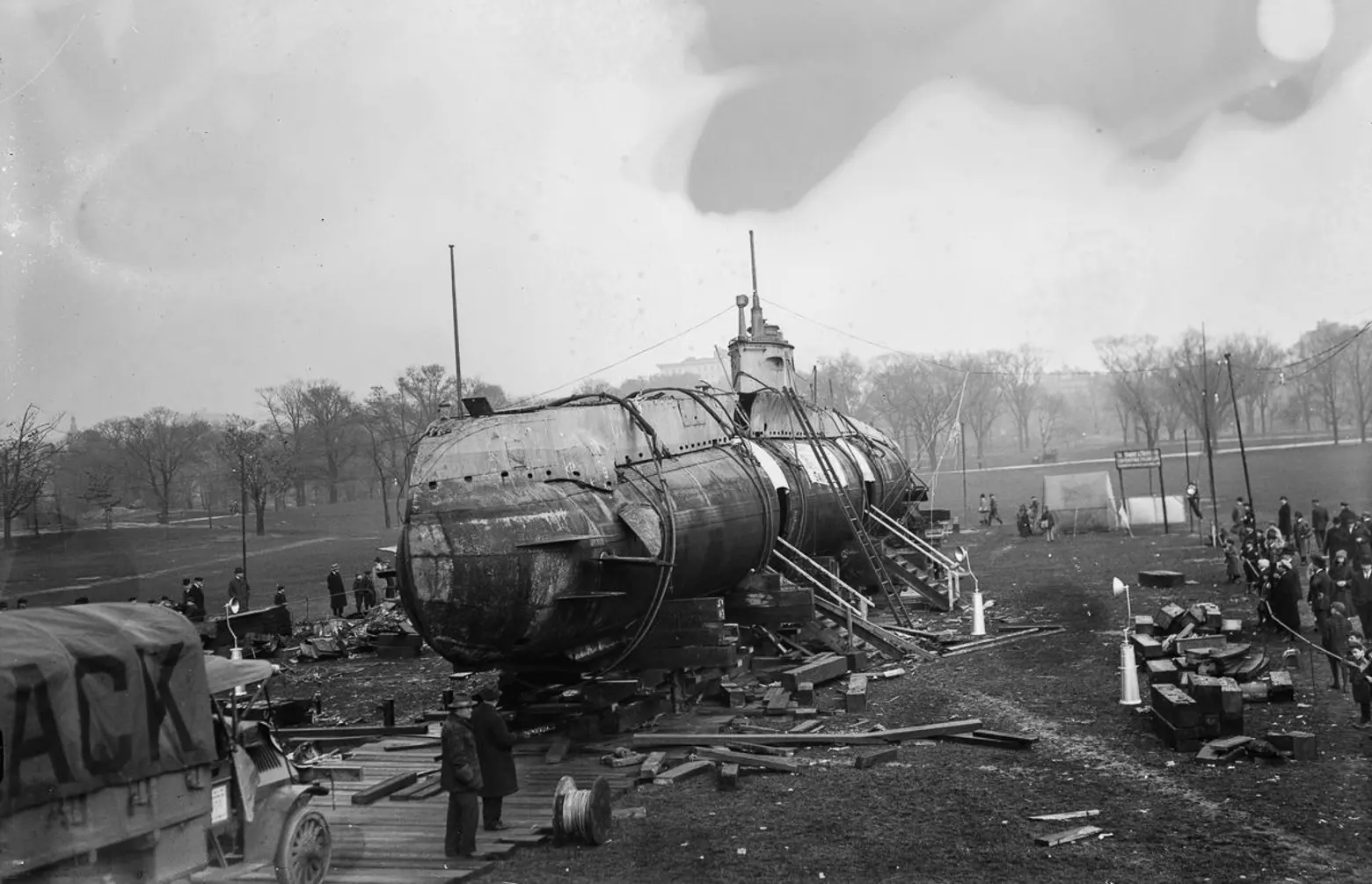
Photo via Library of Congress
On October 25th, 1917, New Yorkers were celebrating “Liberty Day,” a holiday invented by the federal government to finance the massive effort of entering World War I. One-third of the war’s funding would come from the imposition of progressive new taxes, while two-thirds would come from selling “Liberty Bonds” to the American people. The holiday was part of an unprecedented publicity campaign to convince the public to buy the bonds. New Yorkers are notoriously hard to impress, so it’s no surprise the government rolled out all the punches: a three-engine Caproni bomber plane flew low among the skyscrapers, a parade of military motorcycles traveled up 5th Avenue, and a captured German U-boat submarine lay festooned with American flags inside Central Park.
Around the country, the government put up millions of billboards, flyers, and ads asking Americans to prove their devotion to their country by lending their dollars to the fight. But New York got its own Liberty Day, with a packed schedule of patriotic events.
The Caproni bomber flying over the city dropped paper bombs with the message “A Liberty Bond in your home will keep German bombs out of your home.” The parade of military motorcycles, armored cars, and tanks traveled up 5th Avenue to Central Park, where the U-boat awaited.
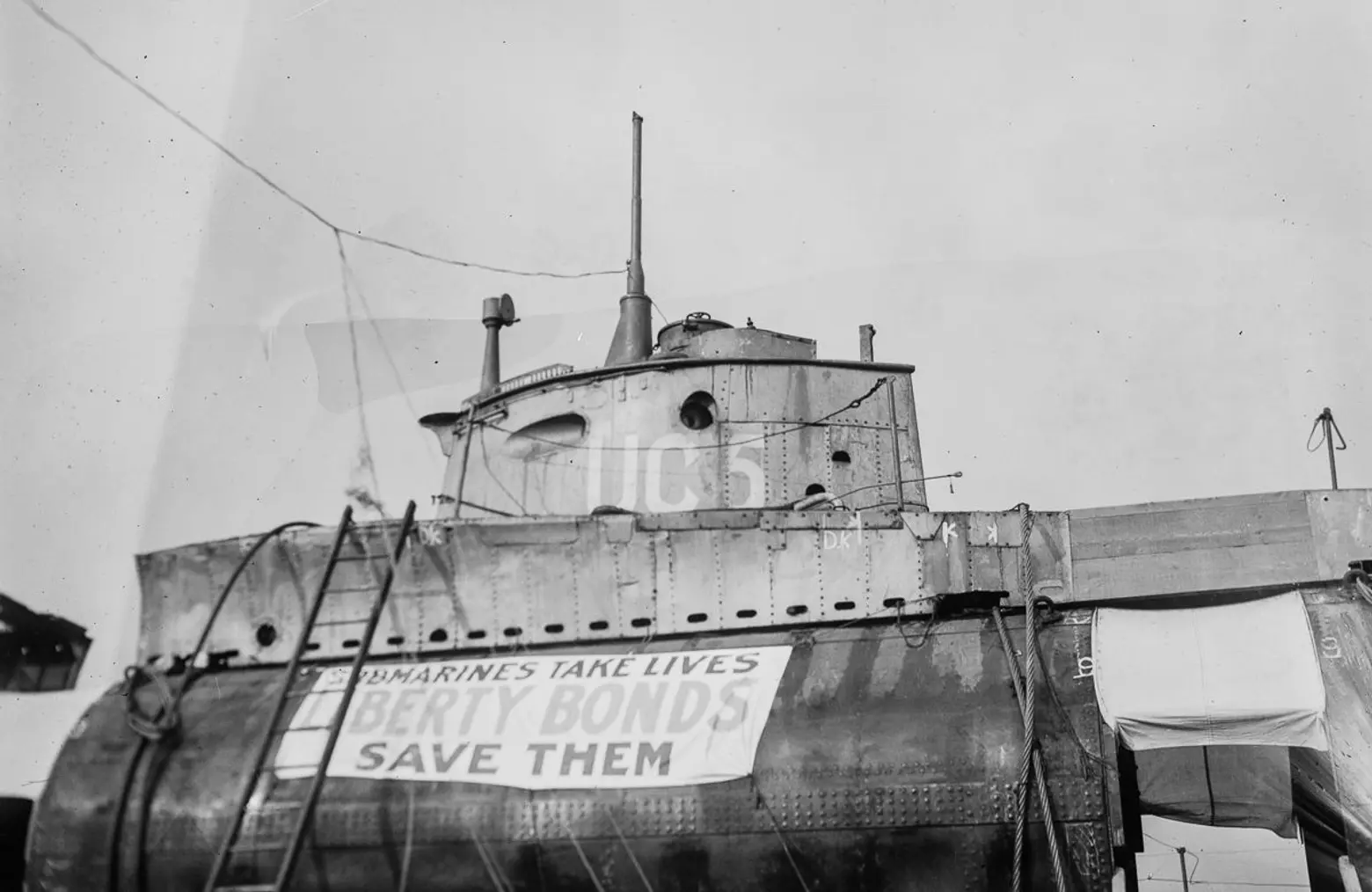
The beached submarine, ceremoniously rechristened from “U C-5” to “U-Buy-A-Bond,” attracted thousands. It served as a Liberty bond booth, meaning exclusive admission was granted to those who were “able to show evidence of being a Liberty Loan bondholder.” Basically, to gain admission to the exhibit, you had to buy a bond.
The German U-Boat has been captured off of the east coast of England in the Spring of 1915. It was first placed on an exhibition on the Thames in London, then came to the United States in sections in October 1917. The New York Times wrote at the time that the “freight ship to lighters… were brought to a pier at 131st Street. Here, a powerful wrecking crane transferred these sections to heavy horse-drawn trucks. It took forty-two big draught horses to haul the heaviest section from the pier to the park.”
The submarine was then transferred to “the sheep pasture” (now Sheep Meadow) in Central Park via a parade that passed through Manhattan Street to 125th Street, to Seventh Avenue, to 110th Street, to Central Park West, to the Sixty-sixth Street entrance to Central Park.”
The New York Times also noted that a British tank that saw heavy action in France was exhibited alongside the submarine. These days, it’s unknown what has happened to the exhibits.
By the end of the war, more than 20 million Americans had purchased Liberty Bonds, raising an impressive $17 billion.
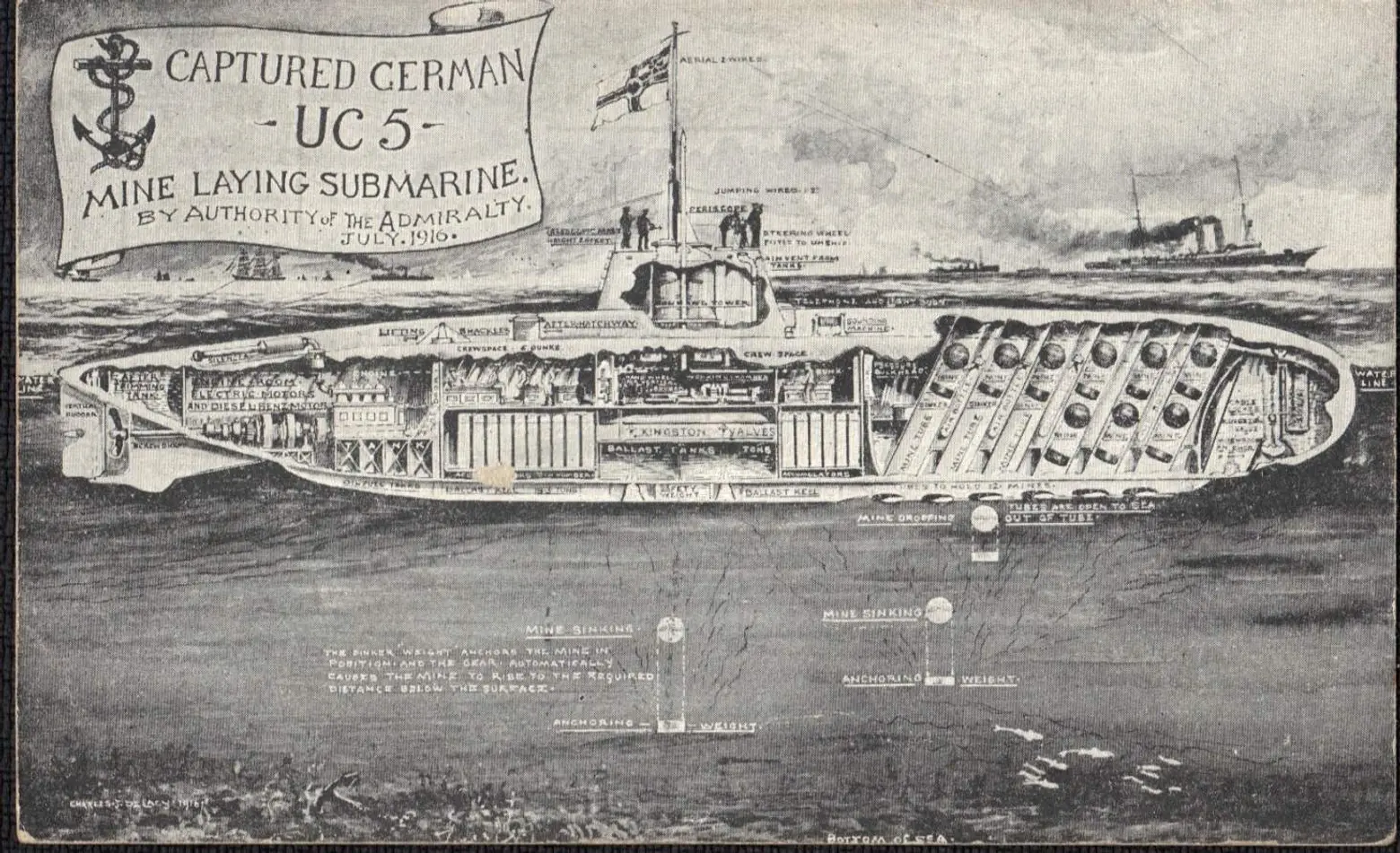
Be sure to check out more incredible pictures of the parade in the gallery below. Pictured above is a cross-section of the U-boat that made such a mark on New Yorkers.
RELATED:
- The History of Central Park’s Hooverville, the Great Depression Pop-Up Shanty Town
- See How Much Central Park Has Changed Since the ’80s in These Before-and-After Photos
- A rejected design for Central Park from 1858 shows colorful, whimsical topiaries
Photos via the Library of Congress
